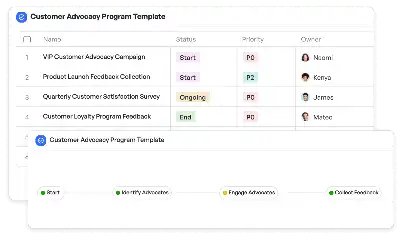Hardware Bug Triage Protocol
Achieve project success with the Hardware Bug Triage Protocol today!

What is Hardware Bug Triage Protocol?
The Hardware Bug Triage Protocol is a structured approach designed to identify, prioritize, and resolve hardware-related bugs efficiently. In the realm of hardware development, bugs can range from minor glitches to critical failures that disrupt functionality. This protocol ensures that every bug is systematically addressed, minimizing downtime and ensuring product reliability. By incorporating industry-standard practices, the protocol provides a clear framework for teams to collaborate effectively, even in high-pressure scenarios. For instance, in a manufacturing environment, a hardware bug in a critical component could halt production. The triage protocol helps teams quickly assess the severity, assign responsibilities, and implement fixes, ensuring minimal disruption.
Try this template now
Who is this Hardware Bug Triage Protocol Template for?
This template is tailored for hardware engineers, quality assurance teams, and project managers who are directly involved in hardware development and maintenance. Typical roles include hardware design engineers, QA analysts, and technical leads. It is particularly beneficial for teams working on complex hardware systems where bugs can have cascading effects. For example, a team developing a new microcontroller for IoT devices can use this protocol to ensure that bugs are identified and resolved before mass production. It is also ideal for startups and established companies aiming to streamline their bug resolution processes.

Try this template now
Why use this Hardware Bug Triage Protocol?
Hardware bugs often present unique challenges, such as difficulty in replication, high stakes in production environments, and the need for cross-functional collaboration. This protocol addresses these pain points by providing a structured approach to bug triage. For instance, it includes steps for severity assessment, which helps teams focus on critical issues first. It also facilitates clear communication between hardware and software teams, ensuring that dependencies are managed effectively. By using this protocol, teams can avoid costly delays, reduce the risk of hardware recalls, and maintain customer trust. Its value lies in its ability to adapt to various hardware development scenarios, making it an indispensable tool for any team.

Try this template now
Get Started with the Hardware Bug Triage Protocol
Follow these simple steps to get started with Meegle templates:
1. Click 'Get this Free Template Now' to sign up for Meegle.
2. After signing up, you will be redirected to the Hardware Bug Triage Protocol. Click 'Use this Template' to create a version of this template in your workspace.
3. Customize the workflow and fields of the template to suit your specific needs.
4. Start using the template and experience the full potential of Meegle!
Try this template now
Free forever for teams up to 20!
The world’s #1 visualized project management tool
Powered by the next gen visual workflow engine




